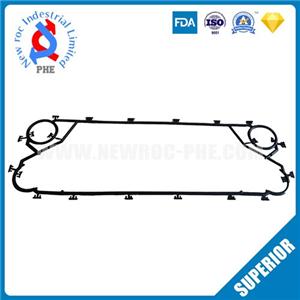China Plate Heat Exchanger Promotions
Design method of average temperature difference method of plate heat exchanger
1. Calculate the unknown temperature or flow rate, calculate the unknown temperature or flow rate through the heat balance equation, and also calculate the heat load Q.
2. Select the appropriate plate type, and select the appropriate plate type according to the heat exchange capacity and flow rate.
The choice of plate model depends on the specific working conditions. When the flow is large and the pressure drop is low, a plate with a small resistance should be selected; otherwise, a plate with a larger resistance coefficient can be used.
3. Estimate the heat exchange area and calculate the approximate heat exchange area based on the heat exchange amount.
4. Select the flow and the number of channels, and initially select the flow and number of the cold and hot fluids, and calculate the flow rate from it.
5. Find the average temperature difference.
6. Find the convective heat transfer coefficient and the total heat transfer coefficient. First, find the convective heat transfer coefficients of the cold and hot fluids respectively, so as to calculate the total heat transfer coefficient.
7. Calculate the necessary heat transfer area.
8. Turn back to calculate the heat exchange area.
9. Check the pressure drop. The allowable pressure drop often becomes a limiting factor in the design of plate heat exchangers.
Efficient design always requires sufficient pressure drop. If no matter how the process layout is changed, the relationship between heat transfer load, flow rate and allowable pressure drop cannot be coordinated, only inefficient design solutions can be made. If a satisfactory design solution is not always obtained in the design, you can consider changing the board type.




